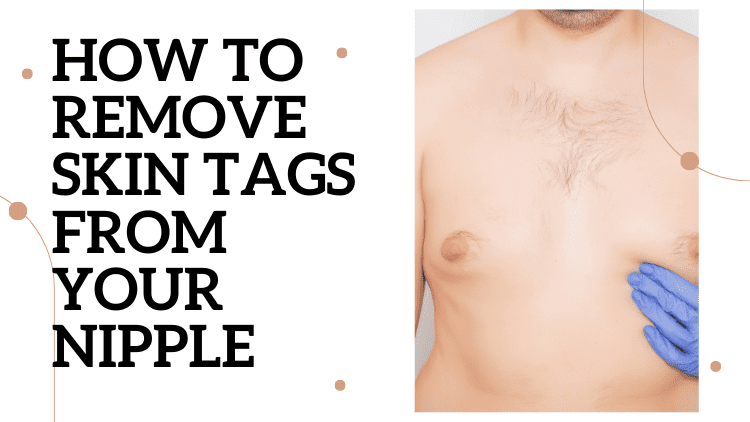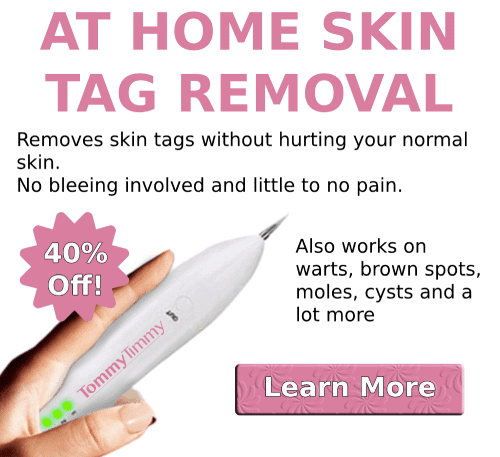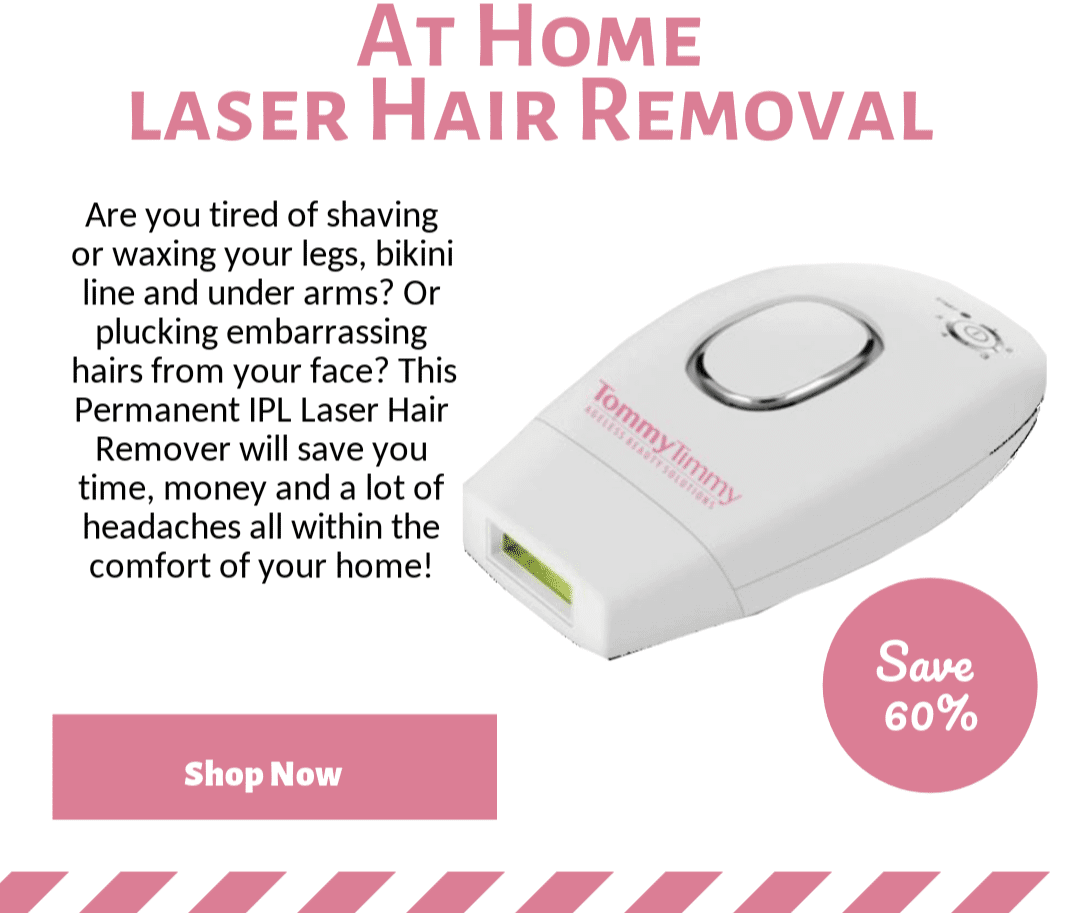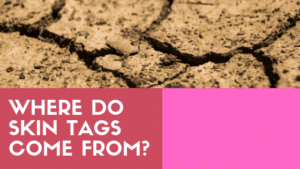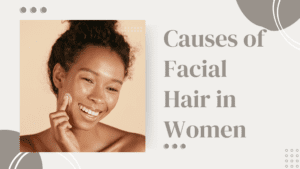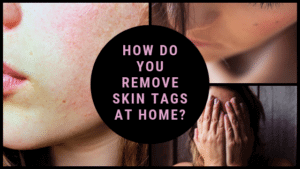When it comes to body care, skin tags are just one of the issues that can arise. Although these small growths are harmless and typically painless, they can be unsightly and emotionally distressing for many people.
When it comes to removing a skin tag from an area like the nipple, this can be a particularly sensitive procedure. But with the proper technique and guidance, it is possible to remove a skin tag from your nipple quickly and safely.
Contents
What Is A Nipple Skin Tag?
It may seem strange or even alarming to find a skin tag on your nipple area. However, it’s important to understand that these benign growths are common, and they don’t necessarily indicate any sort of health issue or problem.
Skin tags are made up of small bundles of collagen fibers surrounded by a thin layer of skin. They can range in size from as small as a grain of rice to larger than a grape. The color can vary from light pink to dark brown depending on their location and how much sun exposure they get.
There are both at-home remedies and medical treatments available for removing skin tags from the nipple area; however, it’s important to consult with a doctor before attempting any removal method to ensure it is safe and will be effective.
Causes Of Nipple Skin Tags
Nipple skin tags can cause discomfort and distress in many people. It is important to know what causes these benign skin growths, so that they can be treated properly.
The most common cause of nipple skin tags is friction. When the same area of the nipple rubs against clothing, it can create small bumps which become irritated and eventually form a tag. Other possible causes include genetics and hormones.
Wearing loose-fitting clothes can help reduce friction on the nipples and prevent further irritation from occurring.
Identifying Nipple Skin Tags
Identifying a skin tag on the nipple can be difficult, as they are often small and of the same color as the surrounding skin. They may look like small bumps that hang off the nipple, or swellings around the areola.
The size and shape of these tags can vary from person to person.
It’s also important to note that some growths near the nipples are not skin tags but cysts or other types of growths, so it is essential that a professional diagnosis is made prior to any treatment being performed. If you suspect that you have a nipple skin tag, consult with your doctor or dermatologist for more information about removal options available.
Assessing The Risks Of Nipple Skin Tag Removal
For starters, nipples are sensitive areas and require careful handling during the procedure. It’s best to seek a professional who is experienced in cosmetic surgery and can ensure minimal pain and discomfort for the patient.
The doctor should also check for signs of skin cancer – since some types of skin cancer can present as small bumps on the nipple.
Aside from medical concerns, there are also potential psychological effects from removing a skin tag from the nipples. Some people may feel self-conscious or embarrassed about their body afterward – so it’s important to be aware of these feelings before proceeding with any procedure.
Professional Skin Tag Removal From The Nipple
Skin tags on the nipple can be a nuisance, but you don’t have to suffer alone. If you’re looking for a permanent solution to get rid of your pesky skin tag, then professional removal might be the right choice for you. A visit to your plastic surgeon or skin specialist will help you make sure that the job is done right!
It’s essential to have skin growths removed professionally in order to avoid any further complications. Your medical expert will help ensure that all the necessary precautions are taken and that everything is done correctly. This procedure may involve numbing agents or medications depending on the size of the tag and its location.
There’s no point in taking any risks when it comes to something as delicate as your nipple.
What To Expect During Nipple Skin Tag Removal
This type of skin condition, often caused by friction and irritation, can be safely removed by a doctor or dermatologist. Depending on your individual case, the doctor may use a scalpel or laser to remove the skin tag and cauterize any surrounding blood vessels. This will help minimize any potential scarring post-procedure.
In some cases, a chemical peel may be used to treat the affected area as well. Chemical peels work by removing dead skin cells from the surface layer of skin in order to reduce redness and inflammation associated with the skin tag.
While this option may require multiple treatments, it could potentially result in smoother-looking skin than other methods of removal.
Aftercare For Nipple Skin Tag Removal
After having a skin tag removed from your nipple, proper aftercare is key. Skin care is essential in order to ensure the area heals quickly and properly. This can include cleaning the area with warm water and a gentle soap and applying an antibiotic ointment. Additionally, it’s important to avoid picking at the area or scratching it while it’s healing.
Mole removal techniques such as laser skin resurfacing can also be used for aftercare. This treatment method uses lasers to remove damaged skin cells and promote new cell growth. It can help reduce scarring and improve the appearance of the affected area. Additionally, it helps reduce inflammation, which can improve healing time and minimize discomfort in the area.
It’s also important to keep an eye on any changes that may occur in the treated area.
Common Complications Of Nipple Skin Tag Removal
Beyond physical complications, there are also psychological effects that can be caused by nipple skin tag removal. For example, some people may experience feelings of shame or embarrassment related to their nipples due to the procedure.
Additionally, self-esteem can be negatively impacted if one’s nipples don’t look “normal” after the procedure.
It is important for those considering nipple skin tag removal to weigh the potential risks and benefits carefully before making any decisions and discussing options with a qualified medical professional.
Freezing Nipple Skin Tags
This method involves using a cold liquid nitrogen spray at low temperatures to freeze off small skin tags.
It’s important to ensure that this method of removal is done as safely as possible. First, make sure that the area around the skin tag is clean and dry before applying the liquid nitrogen. Be sure also to wear gloves when handling the spray bottle and only use it in a well-ventilated space.
Additionally, it’s important to avoid spraying too close to any folds or creases in the skin, as this could cause damage or burning.
TIP: When applying liquid nitrogen, remember to hold the bottle about 6 inches away from your skin and move it in slow circles until all of the skin tag has been frozen off.
Excision Of Nipple Skin Tags
Cutting a skin tag from the nipple is like cutting a branch from a tree. It needs to be done with precision and care, as any misstep can cause potential damage to the surrounding skin.
Excision of nipple skin tags involves surgically removing the skin lesion in order to restore the natural contour of the nipple and create an aesthetically pleasing result.
The procedure begins with an incision around the base of the skin tag, allowing for removal without causing further trauma to the surrounding tissue. The doctor may also perform inverted nipple correction if needed, which involves creating an incision along the outer edge of the nipple to help it stand out more prominently.
After cutting away the skin tag, sutures are then placed around the edges of the wound in order to help close it and speed up healing time.
Laser Surgery For Nipple Skin Tags
Laser surgery is becoming a popular method for removing skin tags from nipples. The procedure involves using a laser to precisely target the affected area to remove the skin tag without leaving any scarring.
For those looking for an effective solution for their nipple skin tags, laser surgery may be worth considering. Not only can it provide quick results with minimal downtime and scarring, but it can also address other issues related to inverted nipples.
Alternative Treatments For Nipple Skin Tags
Alternative treatments for nipple skin tags are becoming increasingly popular due to the lack of side effects and lower costs. While laser surgery is an effective way to remove a skin tag, it’s not always necessary.
One option is tie-off therapy, which involves tying off the base of the skin tag with a thread or dental floss. This cuts off the blood supply to the tag, causing it to shrink and eventually fall off in about 10 days. Another option is cryotherapy, which uses extreme cold temperatures to freeze and destroy the tissue.
Prevention Of Nipple Skin Tags
There are a few preventative measures you can take to reduce your risk of developing these bumps on your nipples.
Pay attention to your hygiene habits and follow them regularly. This means cleaning your nipples daily with mild soap and water, making sure to dry them thoroughly afterwards.
In addition, wear breathable fabrics that won’t irritate your skin and avoid tight-fitting clothing when possible.
When To Consult A Doctor About Nipple Skin Tags
The presence of skin tags on the nipple may not require medical attention but it is important to determine the cause before taking any kind of action.
If the skin tag does not cause irritation or discomfort then it can safely be left alone.
However, if the skin tag becomes larger or irritated it is recommended to seek professional help. A doctor will assess the size and location of the tag before recommending any treatment options.
Conclusion
Nipple skin tags can be both uncomfortable and embarrassing. As such, it’s important to understand the causes and treatments available so you can take the necessary steps to get rid of them. While home remedies may be effective in some cases, laser surgery is often considered the best option for removing nipple skin tags.
It can be tempting to try and remove a skin tag on your own at home. However, this should only be attempted if you are comfortable doing so and have assessed the associated risks.
It is always wise to speak with a doctor or dermatologist if you are unsure about how to proceed with removing a nipple skin tag. This way, you can rest assured that you are making the safest decision for your health and wellbeing.
Removing a nipple skin tag is like untying a knot – it is not always easy, but it can be done with patience and care. Armed with the right knowledge and guidance, you will soon find yourself free of your unwanted skin tags.

